#omi header
Text








⠀⠀⠀⠀⠀⠀⠀⠀ /) ⑅/)⠀⠀Neneko x Omi Matching rentry graphics!⠀♡ ⠀⠀⠀⠀⠀⠀⠀⠀⠀ー⠀REQ by @jirai-girl. F ╱ O⠀&⠀Id ╱ Kin ╱ Me OK!


#᧔ ⠀♡ 。゚Requests.⠀ ྀི⠀ ᧓#⠀⠀⠀#assasssin x cinderella#neneko#amai omi#omi amai#layouts#rentry#rentry graphics#rentry gif#headers#messy layouts#animes icons#anime layouts
37 notes
·
View notes
Text

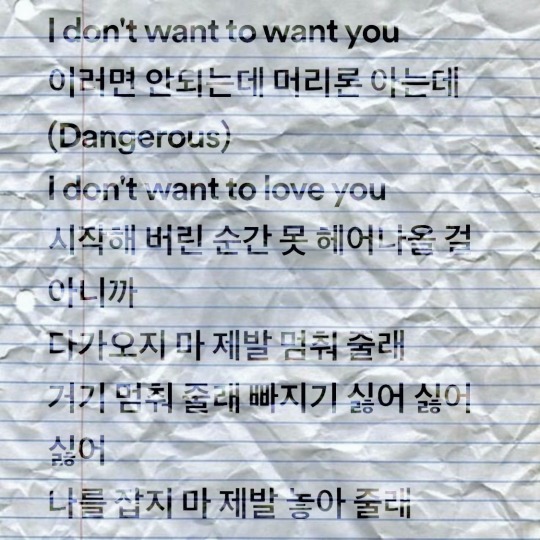
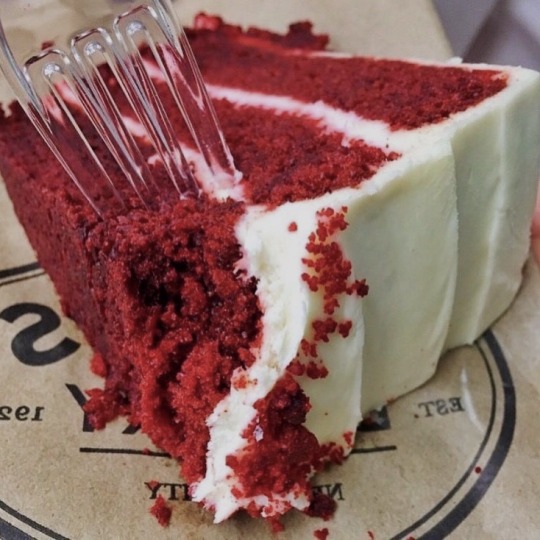
🫐🪢 苗床の命なんてかわらない運命なんて
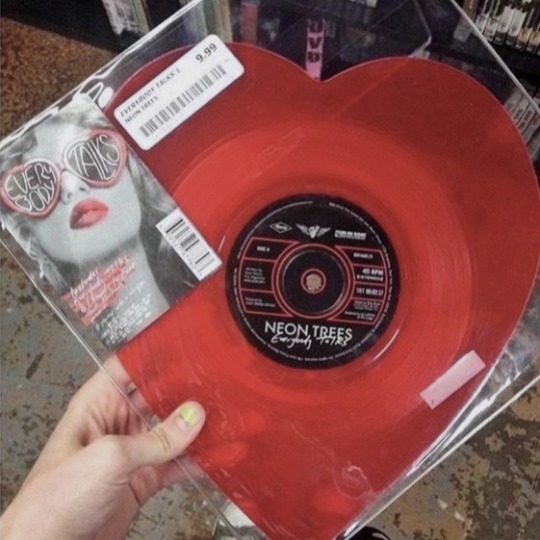



— ୨୧ ˖ ˚ lisoeuf vol.26!
#icons#moodboard#anime#headers#layouts#anime aesthetic#anime edit#anime icons#manga#messy icons#packs#messy layouts#a3!#omi fushimi#taichi nanao#akigumi#red#blue#anime layouts#꒰ edits ꒱#OBSESSED w this cover ohmygodd
166 notes
·
View notes
Note
Is there direct evidence that Courtois destroyed and/or falsified most of Robespierre's documents on purpose? Like, was he ordered to do it? Did he do that on his own?
Out of the approximately 200 Piéces justificatives included in Rapport fait au nom de la Commission chargée de l’examen des papiers trouvées chez Robespierre et ses complices (1795) roughly 75 were written either to or by Robespierre. I’ve been able to confirm the existence of the text in fac-simile for at least 62 of these, mostly by checking other sources like Correspondance de Maximilien et Augustin Robespierre (1926) and seeing if they, when citing a letter originally published by Courtois, could also link to any archived material alongside it. Said correspondence had Courtois’ report as the only source for only two of its letters (1, 2), none of which came off as particulary fabricated at least in my eyes. For the remaining approximately 125 documents not dealing with Robespierre I’ve so far been able to validate 14. This does however not mean I suspect the remaining ones to have been fabricated, only that I lack the sources to check up on them as well. While this is far from a complete study (I’m a bit surprised there doesn’t seem to exist any professional work critically looking over the full report, considering there are suspicions there might have been some foul play) it so far speaks against the theory of Courtois & co having forged and/or falsified a considerable amount of the papers. So far, I’ve also not found any historian voicing their concern that a certain document from the report may be a fabrication.
However, this is not to say Courtois & co didn’t make any alterations to the otherwise authentic material when publishing it in order to tweak the story in the way they wanted it portrayed. One such alteration regards the accusing letter Charlotte Robespierre wrote to her younger brother on July 6 1794, and where Courtois when transcribing the text chose to leave out the header ”Robespierre the younger” along with all references to their shared house on rue Saint-Florentin, to make it look like the letter was really adressed to Maximilien (in her memoirs, Charlotte would insist Courtois had also inserted embellished sentences into the letter, something which on the other hand wasn’t true). Another is regarding a letter from Antoine Buissart to Robespierre dated February 2 1794, which, when comparing Courtois’ version with the fac-simile, shows that the former cut out the first half of the letter when publishing it, for it to look like it only contained complaints. In yet another letter from July 19 1792 one Janegon writes to Robespierre that he is deserving of a civic crown. When publishing this letter, Courtois, according to J.M Thompson, left out both the date and the word ”civic” to make it sound like Robespierre was being offered a royal crown during his time in power. Thompson similarily writes that, when handling spy reports from Guérin, head of a CPS espionnage department, Courtois either replaced the word ”citizens” with ”citizen” or deleted it entirely to make it seem like these reports were adressed not to the entire committee but Robespierre only. These are all examples of alterations I’ve been able to find thus far and I wouldn’t be surprised if there exists even more.
As for if Courtois actually destroyed any of Robespierre’s papers, it should be admitted that, in 1828, there was still enough untouched ones for it to be published a three volume work titled Papiers inédits trouvés chez Robespierre, Saint-Just, Payan, etc, supprimés ou omis par Courtois (ironically, Correspondance de Maximilien and Augustin Robespierre had a harder time providing archived sources for letters originally included in this work than it had with letters originally published in Courtois’ report). To give the word to J.M Thompson again:
It was not until the publication of Papiers inédits trouvés chez Robespierre, Saint-Just, etc., supprimés ou omis par Courtois (Paris, 1828) that it was generally realized how dishonestly Courtois had done his work. A comparison of the two versions shows that, out of the first bundle (liasse) of 10 papers Courtois printed eight, out of the second (56) 17, out of the third (49) 42 — most of these were anonymous letters of flattery or abuse, equally useful for his argument; out of the fourth (62) 11 — here he omits the military mission of Saint-Just and Lebas; out of the fifth (35) 25 — including a number of letters from spies; out of the sixth (34) 24 — spies again; out of the seventh (46) 14; out of the eighth (30) 12; and all of the ninth, viz. 15. Thus, out of a total of 377 documents, Courtois only printed 153; and these were chosen so as to give colour to the rhetorical indictment of Robespierre with which his Rapport began. Not only so: in more than one instance he altered the text of his documents to Robespierre’s disadvantage.
This at least shows us that Courtois, after finishing his report, didn’t just go ahead and throw away all the papers he’d chosen not to include in it. This is further proven by the article Les livres de Robespierre au 10 thermidor (1992) by Fabienne Ratineau, where we learn that on August 1 1795, around 220 books confiscated from Robespierre’s room after thermidor were sent to the national Dépôt littéraire to be documented (the list is published by Ratineau and has been translated into English here). Finally, La saisie des papiers du conventionnel Courtois 1816 (1891) (which I unfortunately haven’t been able to find online but which might shed more light on the activities of the subject of study) shows that Courtois at the time of his death in 1816 still possessed works originally belonging to Robespierre, among which were a bible (that has since gone missing) and 22 letters.
None of this does however disprove the idea that Courtois destroyed documents when first picking through them. If so, arguably only he and the rest of his commission knew about it, and the only way for us to do so would be if any of them came clear later in life. Such confessions I have however not been able to find.
Finally, if Courtois & co were explicately ordered to destroy or falsify papers by the Convention is yet another question I’m afraid I have to give an anticlimactic answer to, since I have yet to find any decree outlining the details of the mission given to their commission, nor the minute for the Convention session when said commission was founded… (I tried looking at Histoire parlamentaire de la révolution française… but so far no luck…)
30 notes
·
View notes
Note
Hi !
You're my absolute favorite Omi artist. You just portray him in a way that makes me salivate is so beautiful, and i'm SO glad you're finally on tumblr 😭😭😭 I used to have your vamp omi (with credits to you) as my header and when I tell you no art has hit me right in the heart like that one did ugghhhh >.< can't wait to see more !
AHAHA thank you !!! im so glad to know that you enjoy my art enough to use it dudkgsqjhd 😭 it really means A LOT thanks again !! <33333
16 notes
·
View notes
Note
Hi!!!
I just wanted to say I love your header very much <3

omy gosh thank youuu 😭🩵
2 notes
·
View notes
Note
mizu, i just noticed the coffee shop theme omg its adorable 🤎🥺 you went all out!!!
pls i'm in love with your header with chibi omi
aaaah thank you isa🥺🥺 yes i finally decided to commit to the theme🤎
2 notes
·
View notes
Note
heyy just wanted to ask if you have the full photo of the header u used for your omi compression fic;;;; for science purposes ofc;;;;
Omg i wish i did i found the cut up version as well 😭😭😭
0 notes
Text
PORN-BOT REVIEW
Ep.1 [isobelil1v]

URL [1/10] rating: WEAK
Very low effort. Not recognizable as a name or word rendering it immediately useless in the spam game. The only person I could see this getting past would be my great Omi (rip). Her low English skill and dementia aside, she would have responded merely by accident. Akin to accidentally bumping the message notification you were trying to avoid.
THEME [0/10] rating: INCOMPREHENSIBLE
Almost the worst bot theme I've ever seen. I don't know what more I could say. Looking at this blog is like driving at dusk when my astigmatism is really bad.
HEADER/PFP [7/10] rating: HILARIOUS
Something about the PFP and header both being white women with their hands on their hips wearing boho style white clothing, really makes me crack up. they aren't even the same women. Love that. If this were a shit posting blog it would be 10 of 10.


TOTAL [8/30]
Overall this was a really bad use of server space somewhere but I'm glad Elon was such a useless hog that now I get to laugh at shit like this. Thanks!
1 note
·
View note
Text
on “Tomorrow I’ll be at the Table”
Tomorrow I’ll Be at the Table: Black Geographies and Urban Planning: A Review of the Literature by Anna Livia Brand and Charles Miller.
doi:10.1177/0885412220928575
This was probably the most dense article I’ve read, so far (next to Archer).
Brand and Miller penned this literature review of scholarship within the Black geographies to provide an argument for the inclusion of sub discipline in urban planning, for they believe this subject provides a scope that is missing in planning: racial and spatial formation. Planners continue to grapple with their understanding of the impact of race not just historically, but how it continues to unfold in every day life. Brand and Miller argue the Black Geographies offers a lens into how to think about race and “racial processes — as they have taken place and as they are taking place.” (p.10).
The Black geographies is a subset of geography which focuses on the linkages between place and space, and, originally, race (Hawthrone, 2019). However, as geography matured as a discipline, it began to erase the interaction with race from their scholarship. Or at least, geography moved the concept of race into a generalized experience, if mentioned at all. This is not unlike what has happened within urban planning, which habitually flattens the racialized experiences of the spaces racialized people inhabit and how their access to that space (or mode) impacts themselves. To Brand and Miller, the Black geographies “…offers an important lens for understanding the mutually constitutive relationship between race, racism, and space.” (p. 1). One of their key arguments for the creation of this literature review, for the planning audience, is because of the Black geographies’ critical engagement of “ongoing connections between historical and contemporary racial processes…” and spatiality is crucial for planners to understand. For, leading into their second argument, the Black geographies “sheds light on the ways that planning still shapes the space of race” the perspective of which could be useful for planners who are focused on building racial equity. The aspect of the Black geographies offers these planners and scholars in particular new avenues for collaboration and change, leading to new ideas and imagination for “planning futures”.
The literature review that follows their arguments is broken down into three (3) themes of Black geographies literature + special focus on the scholarship of Du Bois, Hunter, and back to Du Bois
Literature that, “relates to the spatialization of racial processes and the racialization of space and scholarship that theorizes the intrinsic connections between racial and spatial processes.”
History of the “empirical studies of black spaces” and “how the experience of space s shaped by race and racism
Special focus on the scholarship of Du Bois, Hunter, and back to Du Bois
Examination of more recent scholars and their contributions for planning scholarship and practice
Planning scholarship that focuses on these “tensions”, calling for more “centrality in planning scholarship on race and racism” and challenging the field on “ways of imagining outside these structured systems of oppression.” (p.2)
Using the Black geographies literature, Brand and Miller “center racism as intrinsically enacted and codified through the built environment and through development decisions.”
List of themes that are central to the Black geographies and resonate with urban planning (+ headers within the article):
Race and racialized space
This section talks about the movement from race to racialized space through some key authors whose work is deemed critical within the Black geographies, such as George Lipsitz, Ruth Wilson Gilmore, and Omi and Winant (find first names), and introduces Critical Race Theory (CRT). Critical race theory has been co-opted and erroneously reported as analogous to U.S. history. CRT is actually “an analytical lens that ‘recognizes that racism is engrained in the fabric and system of American society’” and this lens “centers the ‘racial sensibilities of racial minorities.’” Finally, CRT focuses on structural racism and oppression, for the focus on individual racism obscures the impacts of structural racism, the power dynamic behind racism, and racism’s systemic nature.
Du Bois as the central figure of the subject or Du Bois’ the Philadelphia Negro to Hunter’s Black City Makers
The theme of this section is the every day Black experience. Du Bois’ The Philadelphia Negro is the first sociological study to center Black spaces and Black experiences, “socially and economically”. Du Bois’ study of every day life for Black Philadelphians spawned literature on this subject, Drake and Cayton’s The Black Metropolis (following Black life in Chicago, it “analyzed the spatialization of Chicago’s black community as a city within a city.”) These analyses were not just about documenting the banality of life, but were subversive: the texts critiqued dominant narratives on Black people in inner cities, from the Du Bois and “negro problem” (and the color-driven caste of black society) to Gregory and the social disorganization of Black neighborhoods. This was carried forward by Hunter who re-tread Du Bois’ journey in Philadelphia’s 7th Ward with Black Citymakers, which follows the “downfall of black capital” for the middle class after the failure of two Black banks in the 1925, the racial, economic, and physical (highway) segregation that marked Black life until to the rise of the city’s first Black mayor in 1983. His analyses follows Du Bois who provided the foundation for documenting “the geography of opportunity (cultural, political, economic or likewise) is tied to the racial geography of the city”.
From Woods’ Plantation Blues to McKittrick’s Plantation Futures
The themes of this section are:
“the persistent racialized structuring of sociospatial landscapes”
“narratives of subaltern resistance that counter this hegemony by centering historical and ongoing and intersectional critiques and articulations of other possible futures.” Subaltern is defined as, “people in the lower social classes and the Other social groups that are displaced and marginalized while also living in an imperial colony.” in sociological postmodern theory. Literary theorist Gayatri Spivak’s, definition is a bit more simple, “the reasonable and rarefied definition of the word subaltern that interests me is: to be removed from all lines of social mobility”
Scholars focused on these themes argue for the visibility of resistance “destabilizes the normative white urban sphere and the assumptive privileges and landscapes of whiteness.” Furthermore, questions about the concept of whiteness has emerged from this research in questioning what George Lipsitz calls the “white spatial imaginary” and its “dominat[ion of] urban planning scholarship, pedagogy, and practice, thus raising possibilities for alternative modes of planning.” In regards to my own research, I’ve been delving into studies of whiteness as it has impacted the integration of transportation justice/racial justice in transportation.
From Thomas’s Redevelopment and Race toward an Antiracist Praxis in Urban Planning
Brand and Miller close out the themes with June Manning Thomas, the only urban planner highlighted from their vast list. I believe this was intentional; planning is known for being a myopic field, outside of academia, despite it being a field that draws from sociology, anthropology, geography, and even psychology. Ending with Thomas re-centers the fact tat the audience is planning scholars and forces us to look outside of what is immediately known. The focus of this literature review is to provide an understanding of the thematic elements of the Black geographies that can ultimately aid in planners imagining an anti-racist future, the focus of this section. Regarding planning, race, and development, Bates and Green (2015) argue that “urban planning’s peripherization of race and racism fails to acknowledge the depth and continued breadth of anti-black racial development” and it fails to “conceptualize alternatives.”
Throughout the article, Brand and Miller interwove a plethora of texts both within the Black geographies, but also within sociology and equity planning. I have prepared a short list below. In Brand’s “Tomorrow, I’ll be at the Table”, Du Bois and and Langston Hughes are central in her theorizing of narratives regarding Complete Streets/urban renewal along Claiborne Avenue and the reimagining of identity in culture.
In the literature review, Brand and Miller set out to argue that “black geographies scholarship offers deeper ways of thinking about race and racial processes—as they have taken place and as they are taking place.”, an element that urban planning lacks and I appreciated while reading, “The Most Complete Street in the world”. Brand and Miller conclude with, “we see black geographies scholarship as providing new foundations for scholars and practitioners who wish to see and take part in collective, racially just tomorrows.” (p. 10)
List of some of the works included in the text:
- W.E.B. Du Bois’ the Philadelphia Negro & The souls of Black folks
- Marcus A. Hunter’s Black Citymakers
- Mary Pattillo-McCoy’s Black Picket Fences: Privilege and Peril Among the Black Middle Class & Black on the Block: The Politics ofRace and Class in the City
- Stephen Gregory’s Black Corona: Race and the Politics ofPlace in an Urban Community
- Clyde Wood’s Plantation Blues and Development Arrested
- Katherine Mckittrick’s Plantation Futures and Demonic Grounds
- Ruth Wilson Gilmore - Golden Gulag
- George Lipstiz’s How Racism Takes Place
- Marcus A. Hunter and Zandria F. Robinson (2018) chocolate cities
- Langston Hughes’s I, Too, Sing America
0 notes
Photo





↷ HIROOMI TOSAKA AND 三代目 J SOUL BROTHERS FACEBOOK HEADERS
Like/reblog if you save.
#Hiroomi tosaka#hiroomi tosaka header#jsoul brothers header#omi header#header omi#jsb header#header jsb#jsoul brothers#sandaime j soul brothers#sandime jsoul brothers header#headers facebook#header facebook
9 notes
·
View notes
Text







blazing☆beachside passion
#icons#anime#moodboard#headers#layouts#anime icons#manga#anime aesthetic#packs#anime edit#messy icons#messy layouts#tasuku takato#a3! citron#omi fushimi#misumi ikaruga#sakyo furuichi#juza hyodo#a3!#꒰ edits ꒱
82 notes
·
View notes
Text

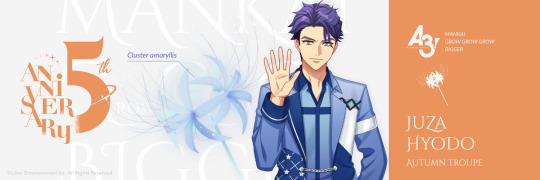




A3: 5TH ANNIVERSARY 🍂
#a3! mankai company#a3! act! addict! actors!#a3! 5th anniversary#a3! autumn troupe#banri setsu#juza hyodo#taichi nanao#sakyo furuichi#omi fushimi#azami izumida#art#design#twitter header
27 notes
·
View notes
Text





#omi_fushimi messy layouts !!
requested by anon <3
pls like/reblog
#a3!#act! addict! actors!#a3! actor training game#a3! icons#a3#a3 icons#omi fushimi#a3! omi#a3! headers#a3! layouts#a3 omi icons#a3 omi headers#a3 omi layouts#omi fushimi icons#omi fushimi headers#omi fushimi layouts#anime layouts#messy layouts#anime messy layouts#autumn troupe#akigumi#akigumi icons#autumn troupe icons#akigumi headers#autumn troupe headers#akigumi layouts#autumn troupe layouts#anime icons#anime headers#messy headers
108 notes
·
View notes
Text


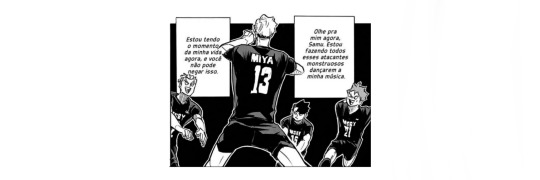

please like or reblog if you use/save :)💖
#miya atsumu#msby black jackal#msby hinata#msby header#headers#miya osamu#hq sakusa#sakusa#sakusa kiyoomi#hq kiyoomi#omi kun#bokuto#haikyuu koutarou#hq hinata#hinata shouyou#haikyuu hinata#haikyuu icons#haikyuu headers#black jackals#anime edit#hq anime#haikyuu!!#miyas#bokuto koutaro
884 notes
·
View notes
Text






"Remember those words echoing in your heart. Even when you’re lost, never give up. This isn’t just trash, look at who we are now. We’ll go beyond greatness"
MANKAI Through the Years: Autumn Troupe
MANKAI Company Anniversaries 1-4
Header Photos (Suitable for Twitter)
Please like/reblog if you save and use!
#a3#a3!#act addict actors#autumn troupe#akigumi#mankai company#banri settsu#juza hyodo#taichi nanao#omi fushimi#sakyo furuichi#azami izumida#wallpaper#wallpapers#header#headers
119 notes
·
View notes
Note
i just realised that lil chibi omi in ur header,,, i want to keep him as a pocket pet sobsobsobs
i think our lives would be significantly improved with a pocket pet omi and it's tragic that we don't 😭😭😭😭
3 notes
·
View notes